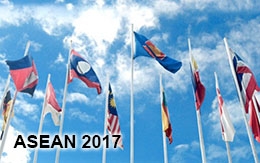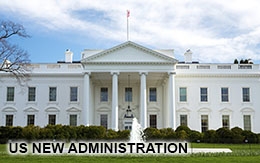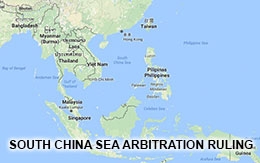The South China Sea Conundrum
The South China Sea is not nearing resolution, nor has it been “lost”. Instead, the “conundrum” is moving into a different and more difficult phase. Although things appear calmer on the surface, the pace of strategic change is accelerating in an unfavourable direction for Southeast Asia, with negative implications for the sovereign equality of small states rubbing up against the national interests of great powers, for adherence to international law and resistance to coercion.

After a decade in the international spotlight, is the South China Sea now fading back into obscurity, as an issue “better left untouched” according to Philippines President Rodrigo Duterte? The fundamental security problem has not gone away. The South China Sea is not nearing resolution, nor has it been “lost”. Instead, the “conundrum” is moving into a different and more difficult phase. Although things appear calmer on the surface, the pace of strategic change is accelerating in an unfavourable direction for Southeast Asia, with negative implications for the sovereign equality of small states rubbing up against the national interests of great powers, for adherence to international law and resistance to coercion.
China’s politics are trending in a more hard-line and uncompromising direction, including on questions of territorial sovereignty. Meanwhile, the US continues to engage in Asia but on a narrower policy gauge. This threatens to relegate the South China Sea to a lesser priority concern subordinate to the nuclear challenge posed by North Korea and the US President’s apparent belief in a personalised, transactional brand of Sino-US entente. Southeast Asian countries appear resigned to handling the resulting deterioration in their security situation as best they can, by hedging, while continuing to make piecemeal improvements in their maritime security cooperation.
While hardly invisible, the South China Sea occupied a noticeably low profile at the recent multilateral and bilateral round of summits in Vietnam and the Philippines, in November 2017, yielding none of the diplomatic fireworks or sea-level incidents that headline writers have grown accustomed to in recent years.
The South China Sea was directly mentioned in ASEAN’s most recent summit joint statement. It was also hinted in President Trump’s APEC address. Along with freedom of navigation and overflight and “unimpeded lawful commerce”, it featured in the Vietnam-US bilateral communiqué, albeit buried in paragraph thirteen. Considering this visit was supposed to clarify the Trump administration’s Asia policy, including presidential time invested in Southeast Asia’s two frontline South China Sea claimant states Vietnam and the Philippines, the South China Sea was remarkably understated as an agenda item, compared with North Korea and terrorism. Japan also resiled from its customary efforts to raise the South China Sea at the East Asia Summit, in Manila. As a result, China was free to present a largely uncontested narrative, including the announcement of a finalised “framework” and the commencement of Code of Conduct negotiations with ASEAN. It is far from clear what this commits Beijing to, in practical terms, or when.
If the South China Sea is receiving less attention as a function of reduced frictions this is not all bad. For the best part of a decade, several ASEAN member governments have sought to reduce tensions, diplomatically and at sea level, as a priority. But internal divisions have inhibited ASEAN’s collective traction on the South China Sea, fraying the organisation’s unity with one public fall-out after another. This same motivation to ease tensions helps to explain the Duterte administration’s deferential behaviour towards China. Just as the Aquino administration’s decision to seek compulsory arbitration was made without consulting ASEAN partners, so Duterte has opted for the opposite unilateral tack, by downplaying the Philippines’ legal victory at The Hague and seeking a bilateral accommodation with Beijing. According to Duterte, the South China Sea is better left untouched because “nobody can afford to go to war.” Duterte’s Foreign Minister and potential successor, Alan Cayetano, appears similarly committed to downplaying the ASEAN-China Code of Conduct as a non-binding “gentlemen’s agreement.” Whatever criticism the Duterte administration’s tilt towards China has attracted, including from within the Philippines armed forces, the basic logic appears clear: the preservation of peace at all costs. At worst, this resembles appeasement.
Such flamboyant volte-faces are not in Vietnam’s more cautious and consistent character as a diplomatic actor. There are some indications that Hanoi has recalibrated its South China Sea policy, with greater emphasis on directly engaging China, tilting the fulcrum of the relationship towards cooperation, and further from conflict. Nonetheless, Vietnam is pursuing cooperation with the US, its partners and allies, including a new strategic partnership with Australia, which was formally concluded in March 2018, during the visit of Prime Minister Nguyen Xuan Phuc to Sydney. The first visit of a US aircraft carrier to Da Nang since the Vietnam War, in March 2018, was an “unambiguous signal of deterrence to China”. Hanoi is likely to maintain its own “red lines” in the South China Sea, but on the basis of diminished support from within ASEAN.
None of this means that the South China Sea has “gone quiet” in the sense of presaging a diplomatic resolution to territorial disputes, or any fundamental change of heart on China’s part. High-profile incidents at sea, and in the air above the South China Sea, have dropped off, but lower-level harassment continues. So, does the ongoing and increasingly open militarisation of occupied features, by China especially. The new and unaccustomed “problem” is a deficit of strategic attention to the South China Sea in Washington.
Before considering current events in more detail, let us step back to reflect on whether the “South China Sea conundrum” is, in fact, an appropriate frame of reference.
The South China Sea has always featured near the top of Asia’s “wicked problems” in maritime security.[1] Yet despite the fiendish complexity of territorial and jurisdictional claims, the basic security mechanics are simple. China aims to dominate as far as possible, claiming even submerged features within its spurious dashed-line claim, while demanding a share of marine resources even where these fall squarely within the sovereign jurisdiction of others under international law. Beijing’s expansionist imperative therefore clashes not only with the interests of Southeast Asian competing claimants in the South China Sea, but a larger group of “rules-based” stakeholder maritime states and commercial entities. The South China Sea matters, even for far-off countries like Australia, because they have their own stake in maintaining physical access to the South China Sea, as well as general interests in upholding international law and regional peace and security.
The sea’s location at the heart of maritime Southeast Asia, and for that matter the Indo-Pacific macro-region (now officially endorsed in the Trump Administration’s new National Security Strategy) gives it special strategic salience, as a junction between two oceans and the world’s most populous countries and hubs of maritime commerce. This prominence goes beyond the aggregate US$3 trillion value of trade flowing through the South China Sea – a misleading statistic when cited in isolation. The South China Sea’s value is primarily geostrategic, and partly symbolic, in nature.
The South China Sea is not about to be closed off to maritime trade, on which China so critically depends. But Beijing is nonetheless engaged in a concerted effort to extend its military, paramilitary and extractive footprint to the sea’s furthest reaches. China has changed the strategic seascape of the South China Sea beyond recognition compared with the status quo just six or seven years ago. A more assertive Chinese posture in the South China Sea dates back to 2008-09. China’s interests there have always had an important military-strategic dimension.[2] But Beijing’s South China Sea focus has intensified since Xi Jinping became President in 2013, as part of a broader policy emphasis on championing China’s sovereignty claims and the rejuvenation of Chinese power. Military infrastructure on the seven artificial islands that Beijing has constructed since 2013 continues to fill out, in conjunction with the thickening of Chinese maritime assets in the Paracels and Hainan. Regardless of whether Beijing declares an Air Defence Identification Zone (ADIZ) over the South China Sea, to match its ADIZ in the East China Sea, there can be little doubt remaining about Beijing’s ambition to roll out a concentric air defence network, pushing China’s southern defence perimeter virtually to the shores of Borneo and Palawan. Further construction at Scarborough Shoal, which Chinese sources have repeatedly hinted at, would extend that perimeter to Luzon.
The US Navy will still be able to operate in the South China Sea for the foreseeable future, but in an increasingly challenging kinetic and electronic warfare environment, trailed constantly by Chinese naval escorts. Without a US presence over the horizon, smaller regional navies would be more easily swayed by displays of intimidation from China. Their governments may rationally conclude that, regardless of their navigational rights under international law, military assets can only operate at acceptable risk in the South China Sea with prior notification or even consent from Beijing. Once China becomes militarily dominant, its forward bases in the Spratlys would be free to serve not only as a means of extending the military surveillance and targeting envelope, but to project naval and air power as far as Australia’s northern approaches and into the eastern Indian Ocean. That future is not pre-ordained, and there are still significant gaps in China’s naval and air capabilities. But this course looks increasingly likely.
...
Click here for full text
Euan Graham is Director of the International Security Program, at the Lowy Institute, in Sydney. The author has a longstanding professional interest in maritime and regional security.
Notes
[1] Sam Bateman, “Solving the "Wicked Problems" of Maritime Security: Are Regional Forums up to the Task?,” Contemporary Southeast Asia 33, no. 1 (April 2011): 1-28.
[2] Bill Hayton, “The South China Sea: The Struggle for Power in Asia”, 2014, Yale University Press, New Haven and London, pp 209-38










